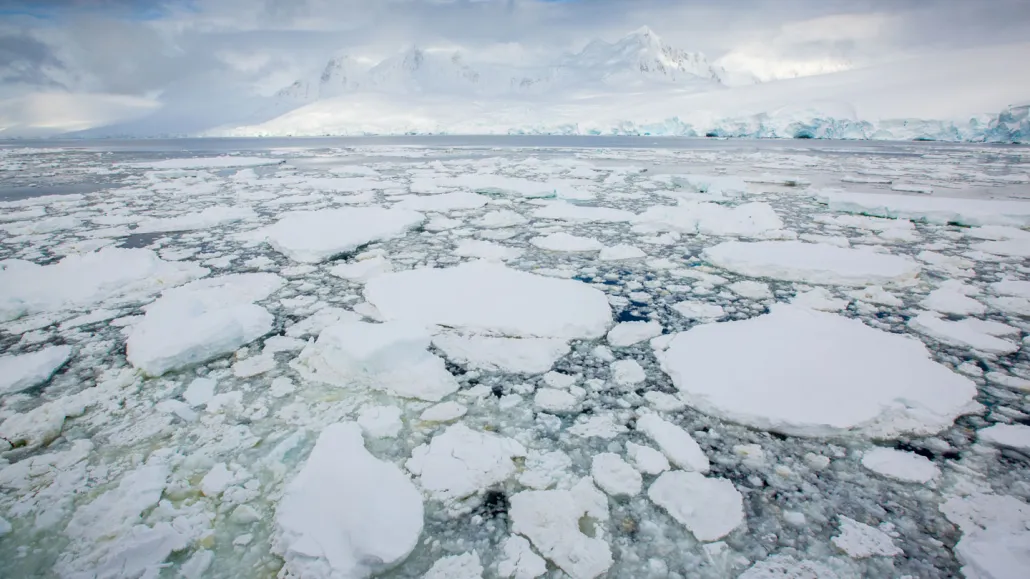Antarctic sea ice has been hitting record lows for most of this year
Such a dramatic decline is expected in the Arctic, but is unusual down south

The extent of Antarctic sea ice (pictured) has been much less for most of 2023 compared to all previous years going back to 1981.
MB Photography/Moment/Getty Images
- More than 2 years ago
Something strange is happening to the Antarctic’s sea ice. The areal expanse of floating ice fringing the continent is not only at a record low for this time of year — surpassing a record just set in 2022 — but ice extent has been hitting record lows throughout the year.
“What’s happened here is unlike the Arctic sea ice expanse,” says Mark Serreze, a climate scientist and the director of the U.S. National Snow and Ice Data Center, or NSIDC, in Boulder, Colo. We’ve come to expect a dramatic decline in sea ice at Earth’s other pole, he says (SN: 9/25/19). “Not much has happened to Antarctica’s sea ice until the last few years. But it’s just plummeted.”
NSIDC uses satellite-gleaned data, collected daily, to keep an eye on the spread of sea ice at both poles. Throughout most of 2023, the ring of sea ice around Antarctica has repeatedly set new record lows, staying well below the average extent from 1981 to 2010. On February 21 — the height of the Southern Hemisphere’s summer — the sea ice expanse hit an all-time low since record-keeping began in 1978, of 1.79 million square kilometers. That’s 130,000 square kilometers — about the size of the state of New York — smaller than the previous recorded minimum, reached on February 25, 2022.
Subpar sea ice
The amount of ocean around Antarctica covered in sea ice in 2023 (red) has stayed well below the average from 1981 to 2010 (black). Sea ice expanse hit a record low in late February — surpassing a record set just in 2022 (blue). The sea ice expanse for every year from 1981 to 2021 is shown in gray.
Even as the Southern Hemisphere shifted into winter, Antarctic sea ice remained at record low levels. On June 27, the ice was dotted across about 11.7 million square kilometers of ocean. That’s about 2.6 million square kilometers below the 1981–2010 average, and about 1.2 million square kilometers below the previous lowest extent on record for June 27, set in 2022.
Unlike Arctic ice, whose dwindling is known to be closely tied to global warming, it’s been harder to parse the reasons for changes in Antarctic sea ice extent. That difficulty has made it unclear whether changes are the result of natural variability or whether “something big has changed,” Serreze says.

The last few years have given scientists pause (SN: 6/27/17). “We’re kind of dropping off an edge,” Serreze says. It’s not yet clear whether this year’s extent is part of a larger trend, he notes. But “the longer that persists, the more likely it is that something big is happening.”
The Arctic and the Antarctic regions are polar opposites, so to speak, in their geographic setting. Ice in the Arctic Ocean is confined to a relatively small body of water ringed by land. The Antarctic, by contrast, is a landmass surrounded by ocean, which means the sea ice around the continent is much more mobile than up north, with a larger seasonal range as it expands in the Southern Hemisphere’s winter and shrinks in summer. Climate simulations have, accordingly, consistently predicted that the Arctic would show bigger sea ice losses as the planet warms, at least at first, while Antarctica would be slower to respond.
As to why the Antarctic ice has tracked so low this year there are a few possible culprits. Regional climate patterns — particularly an air pressure pattern known as the Southern Annular Mode that shifts the direction of winds blowing around the continent — can pack or diffuse the sea ice cover around Antarctica. And other regional patterns, such as the El Niño Southern Oscillation, can affect both ocean and air circulation in the southern high latitudes.
Right now, scientists are concerned most with what lies beneath the ice (SN: 12/13/21). “There’s growing evidence that there has been some kind of change in ocean circulation that is bringing more heat” to the region, which affects the ice cover, Serreze says. “There are a bunch of people looking into this; we’re really blitzing to get the data. We need to understand what the heck is going on in the ocean.”







